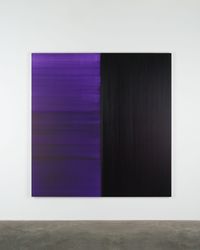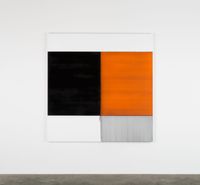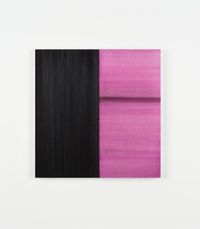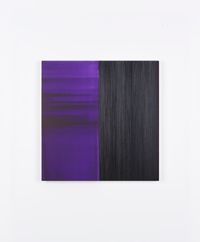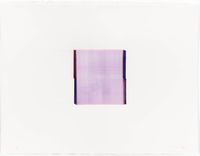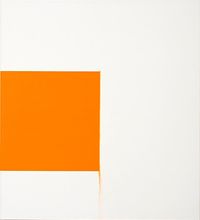Scottish artist Callum Innes has forged a worldwide reputation as one of the most significant abstract painters of his generation. Single-mindedly following his own path, since the early 1990s he has explored monochrome painting in highly innovative ways, creating minimalist geometric abstract works that have captured the attention of the international art world.
Read MoreInnes’ distinctive works are characterized by monochromatic colour zones within precise geometric compositions, yet their apparent simplicity belies their complexity of construction and depth of expression. His paintings have a powerful, almost physical impact on the senses and emotions. Their effect is magical, entrancing and mesmerizing the viewer.
Callum Innes was born in Edinburgh in 1962. He studied drawing and painting at Grays School of Art, Aberdeen, from 1980 to 1984 and completed a post-graduate degree at Edinburgh College of Art in 1985. He was short-listed for the Turner Prize in 1995, won the prestigious NatWest Prize for Painting in 1998, and in 2002 was awarded the Jerwood Prize for Painting.
At art school, Innes focused on figurative works but decided to move towards abstraction after a career-changing residency in Amsterdam in 1987, when he had the chance to see the work of more international artists. However, he still wished to retain a figurative element, a human presence in his work. This was translated in his approach to making the painting and its physical nature. His paintings are created through a complex process of application and removal of paint. Instead of building up a painting through an accumulation of brush strokes which eventually fill the canvas, he often paints a canvas in one colour before using turpentine to wipe away paint from one section of the surface, sometimes revealing the gesso-primed canvas itself. He may repeat this process several times. This systematic layering and dissolving, which takes place over several days, weeks or months, gives his work a complex rhythm and beauty.
Often a thin, vertical line where the cleansed and painted sections of the composition meet, separates the two halves of the canvas. It is not created as an afterthought but is an integral part of the creation of the painting. This line, and the edges of the colour zones, which appear at first glance monochromatic, retain the various faintly coloured residues of the paint which has been removed - traces of the process and controlled chaos of their production. Paradoxically, while the act of creation can be uncertain and tense, the end results are calm and meditative.
Callum Innes makes works in a number of different ways which are continually evolving. He has produced paintings, sculptures and paper works. His series of paintings including Exposed Paintings, Agitated Verticals, Resonance, Isolated Forms and Monologue works are all made by this process of ‘un-painting’ as well as painting. While his forms are sharp and precise, the proportions of his compositions meticulously calculated and perfect, the paintings possess a sense of mystery and emotion which perhaps stem from their often figurative inspiration. Although they are abstract, Innes says they all started originally from figures, plant forms, architectural features or natural occurrences. It is not hard to imagine that the luminous quality of his paintings derives from the vastness and brilliant light witnessed by the artist on his walks on the east coast of his native Scotland.
Innes’ abstract compositions have a feeling of balance and purity, as well as a sense of both space and time. His process of creation leaves behind a memory of what was there before, as the paintings carry within them the evidence that something has disappeared. In this way, the materials he uses are not only the tools of his art but also its subject. The time that has passed, the process of painting, is a vital part of the end result. His paintings elicit a response on many levels—emotional, physical and even spiritual—but the artist is reluctant to explain their magic, preferring to leave each viewer to experience them in his own way.
Callum Innes’ work is held in renowned public collections including the Guggenheim, New York; Tate Britain; the Centre Pompidou, Paris; the National Gallery of Australia; the San Francisco Museum of Modern Art; the Contemporary Arts Museum in Houston; the Irish Museum of Modern Art in Dublin; the Kunsthaus, in Zurich; and the Scottish National Gallery of Modern Art.
